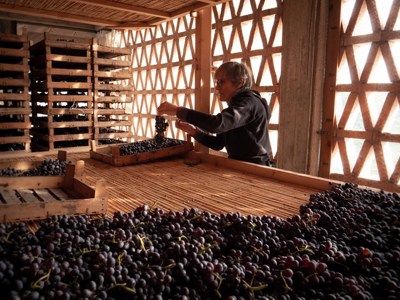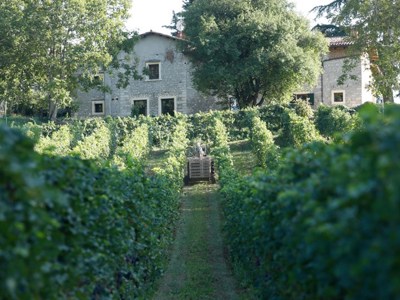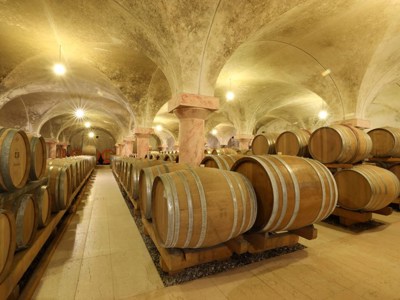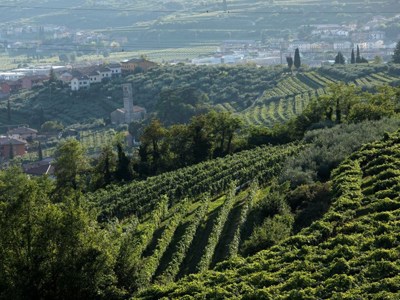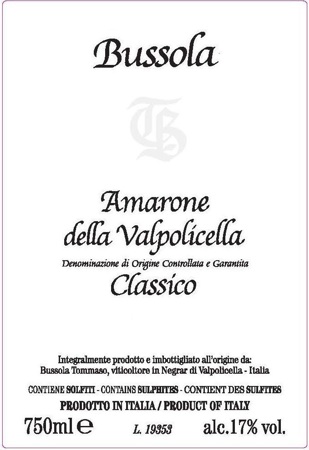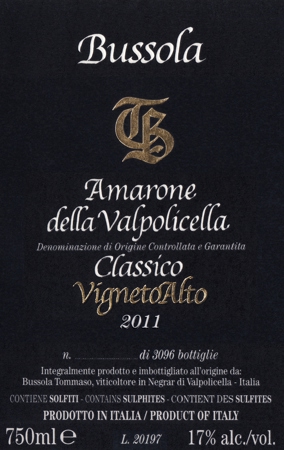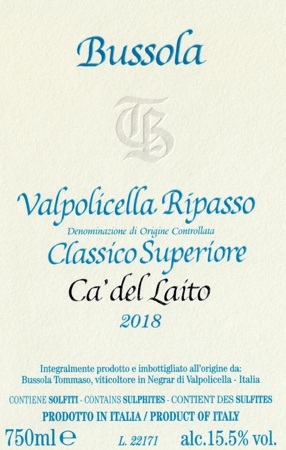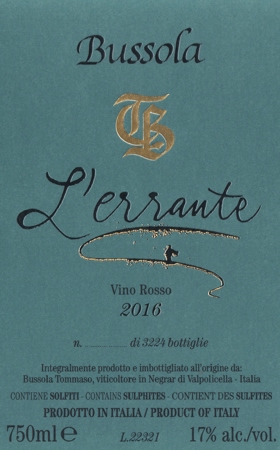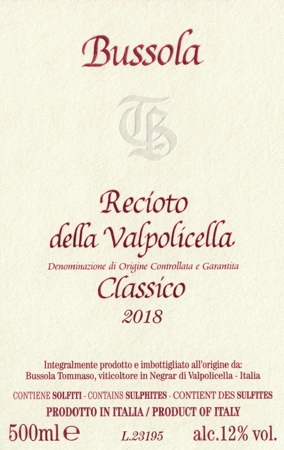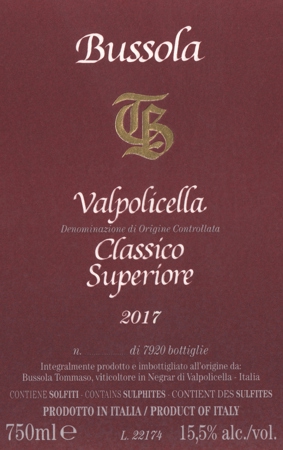Tommaso Bussola
Overview
Tommaso Bussola was a pioneering viticulturist in Valpolicella, one whose wines displayed such a density and complexity of fruit that they transcended previous paradigms.
Today, Tomasso's two sons, Giuseppe and Paolo, are building upon and refining their father's unique style, crafting wines of even greater elegance and finesse.
The estate's normale range is easily among the region's finest values, while the late-released Riservas rank among the region's most remarkable and beloved wines.

Tommaso Bussola Gallery
When Veneto legend Giuseppe Quintarelli was asked years ago to name the region’s next superstar, he didn’t hesitate: Tommaso Bussola.
Quintarelli's prediction began to be realized in 1999, when Tommaso’s 1995 wines were released. Among the countless accolades he received, Gambero Rosso gave him the first of many Tre Bicchieris for his majestic Recioto TB. And 20+ years later, that prophetic answer has been born out by a stream of monumental Valpolicellas, Amarones, and Reciotos.
Learning on the Job
Originally trained as a stone mason, Tommaso took over over his uncle's Valpolicella estate—with its prized old vineyards in the heart of the Classico zone—in the mid-1980's. At that time, most growers sold their grapes, and—just like Champagne or Rioja in that era—very little emphasis was placed on fastidious viticulture.
The inquisitive Bussola started prune his vines shorter, to work his soils more thoughtfully, and to focus on the health and balance of his vines. For, while many producers concentrated on the process of making wine there, Bussola reasoned that raising better fruit would result in better wines (whatever the winemaking and élevage to follow).
Tommaso experimented relentlessly, and absorbed information and ideas from every source available. With each passing vintage, his wines came to show more polish, finesse, intensity, and personality. By the late nineties, Tommaso's style had matured, and his wines had become world-famous for their incredible intensity of fruit.
“These are remarkable wines of the highest level."
- Antonio Galloni
Ancient Clones
The key, we think, is not only the age of his vines but the fact that they are nearly all naturally low-yielding ancient clones. Corvina, Corvinone, and Rondinella dominate, but there are also small amounts of Molinara and Dindarella in the vineyards. Corvinone, though fashionable today, was once heading for extinction because of its low yields and finicky growing habits. Yet, Tommaso claimes it is the Corvinone that gives his wines their depth. He calls it the "Super Corvina," saying that it produces stronger, denser, richer, more perfumed wines. Small amounts of old vine Cabernet Franc, Cabernet Sauvignon, and Merlot are also used for the unique L'Errante bottling.
And today, we are fortunate to witness this estate's transition to Tommaso's two sons, Giuseppe and Paolo. Paolo is primarily focused on commerce, and Paolo on the cellar, but both brothers share their work. Both are in the vineyards constantly, and both taste together frequently. And their irrepressible father still spends long days in the vines, sharing his hard-won experience.
In a region of négociants and modern viticulture, it is an honor to represent this multi-generational estate of old school vignaiolo.
The Wines
Valpolicella Ripasso "Ca' del Laito"— With 3-4 years of aging, the Ca'del Laito bottling is intended to be ready for drinking on release. The ripasso process gives much of the fruit and spice of Amarone, but with lower octane that makes it incredibly versatile at the table.
Valpolicella Classico Superiore (aka "TB")— The riserva Valpolicella sees 50% of the grapes dried for 3 months before mixing with the other 50% (already fermented). The 2nd fermentation that ensues yields a wine that splits the difference between ripasso Valpolicella and Amarone.
L'Errante— An Amarone-styled wine made from Bordelais varietals, the "Wanderer" results from Tommaso's boundless curiosity. Unique.
Amarone Classico— The estate's first goal every year is to make the best Amarone Classico possible. It's the rare Amarone made from all estate fruit, and an incredible value in the category.
Recioto Classico— Paolo has clearly inherited his father's passion for this ancient wine style. The estate's raw fruit quality means that the final wines show an incredibly lush, pure fruit.
Amarone Classico Riserva— Fantastically hedonistic, offering great velvety richness on the palate and exotic notes of black cherry, cocoa, and ash. The Riserva is a selection from the estate's best fruit.
Amarone Classico "Vigneto Alto"— A limited selection sourced primarily from the Alto parcel, home to the estate's oldest vines.
Recioto Classico TB— Bussola's Reciotos are the reference standard for this style. Lofty scores and awards have been legion, but it is the sheer density of fruit that truly distinguishes these rare wines.
Background
The self-taught Tommaso Bussola took over his uncle’s domaine in 1985, and gradually built it into an estate famed for its wines’ luscious fruit. Bussola was a pioneer of serious viticulture in a region often more concerned with post-harvest winemaking. Today, his sons Paolo and Giuseppe are building on that legacy.
The estate holds ~15 hA in Valpolicella Classico, comprised of 40% Corvinone, 40% Corvina, 10% Rondinella, plus 10% Dindarella, Molinara, Merlot, Cabernet France, and Cabernet Sauvignon. An extraordinary 2/3 of those vines are over 50 years old. Vines are trained with a mix of Guyot and Pergola Veronese systems.
The estate uses different barrel sizes, woods (oak, cherry, chestnut, acacia) and aging for each wine, and the aging regimes can vary dramatically from vintage to vintage. The brothers practice organic viticulture. Fruit is dried naturally in traditional fruttaios; buildings exposed to the prevailing winds.
- Established: 1985
- Winemaking/Viticulture: Paolo Bussola
- Appellation: Valpolicella Classico
- Soils: Toar (basalt) & chalky gravel. Terraced steep hillside vineyards
